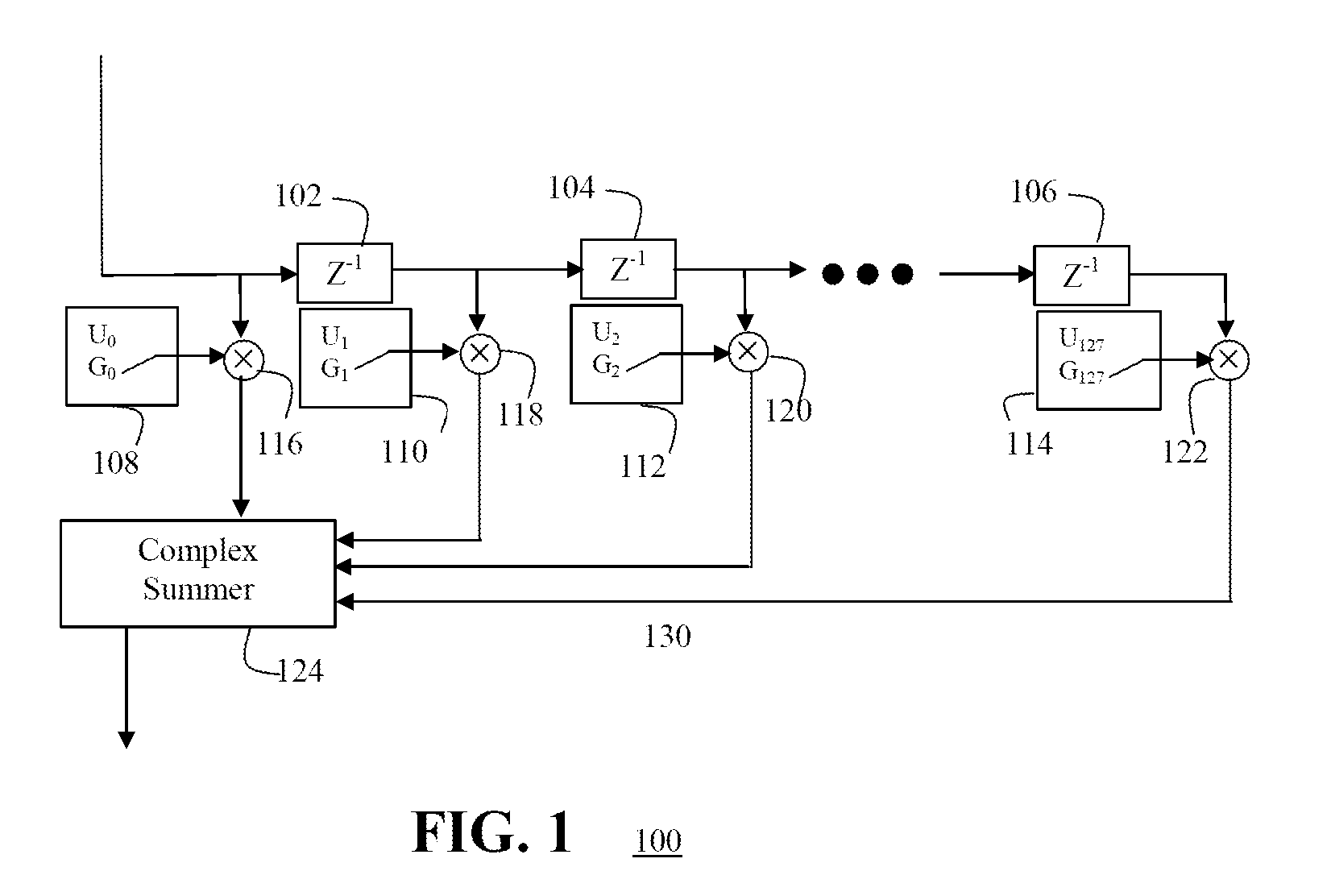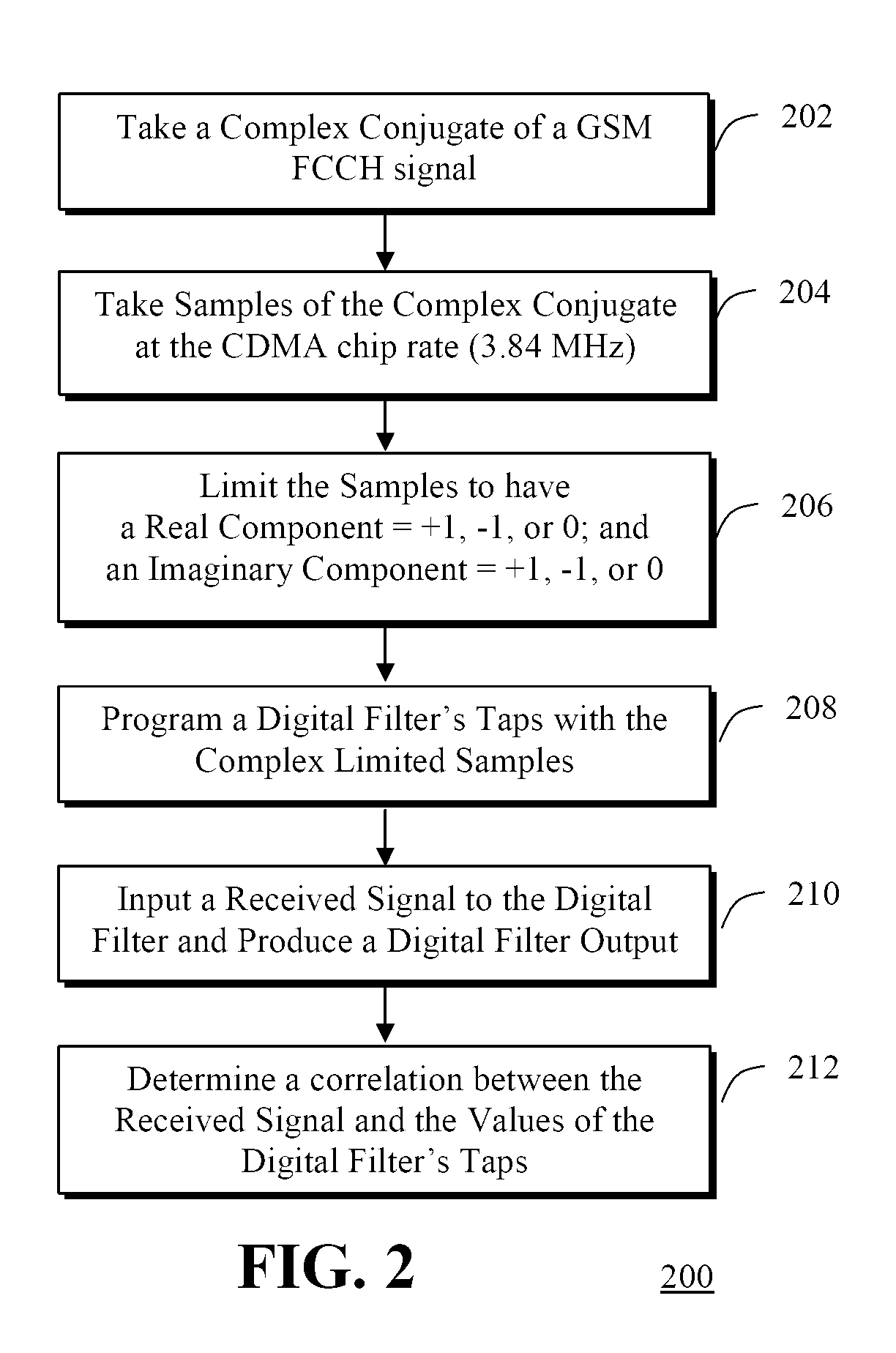Tone detection using a CDMA receiver
a receiver and tone detection technology, applied in the field of signal detection in communications systems, can solve the problems of reduced battery life and processing capacity, increased processing demands, and high cost of techniques, so as to improve signal detection, maintain battery life, and alleviate the threat of increased processing demands
- Summary
- Abstract
- Description
- Claims
- Application Information
AI Technical Summary
Benefits of technology
Problems solved by technology
Method used
Image
Examples
Embodiment Construction
[0025] In an embodiment of the present invention, a CDMA receiver is capable of detecting the presence of tone-based differently formatted signals, by programming a CDMA digital filter with appropriate tap weights. Therefore the CDMA receiver can eliminate the necessity to power-up receiver hardware or to execute software instructions that are specific to the particular format of received communication signals. Post-processing can be performed to improve signal detection based on the determination of the correlation between the received signal and the digital filter, the determination of the corresponding power value, the determination of the signal strength; and the estimation of the frequency offset. As used herein, code division multiple access (CDMA) refers to the third generation wideband CDMA protocol employed in the universal mobile telecommunication system (UMTS) standard. As used herein, differently formatted signals include any signals that are not formatted according to a...
PUM
 Login to View More
Login to View More Abstract
Description
Claims
Application Information
 Login to View More
Login to View More - R&D
- Intellectual Property
- Life Sciences
- Materials
- Tech Scout
- Unparalleled Data Quality
- Higher Quality Content
- 60% Fewer Hallucinations
Browse by: Latest US Patents, China's latest patents, Technical Efficacy Thesaurus, Application Domain, Technology Topic, Popular Technical Reports.
© 2025 PatSnap. All rights reserved.Legal|Privacy policy|Modern Slavery Act Transparency Statement|Sitemap|About US| Contact US: help@patsnap.com



